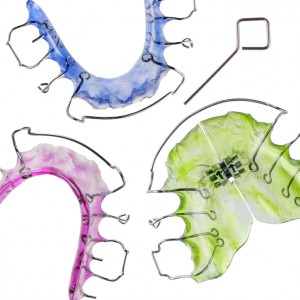So you’ve finished your orthodontic treatment—congratulations! Whether you wore traditional braces or clear aligners like Invisalign, you’ve put in the time and effort to get the smile you’ve always wanted. But before you celebrate by packing away your orthodontic gear for good, there’s one crucial step left: wearing your retainer.
At Robert Stoner Orthodontics, we’re here to explain why retainers matter and how they help protect your investment in a healthy, beautiful smile.
What Is a Retainer, and Why Is It Important?
A retainer is a custom-made appliance designed to keep your teeth in their new, corrected positions after braces or aligners. While your teeth may feel “set,” they’re actually still prone to shifting, especially in the first few months after treatment.
Without a retainer, your teeth can gradually move back to their original positions, undoing all the progress you’ve made. That’s why retainers are not just a suggestion—they’re an essential part of your long-term orthodontic care.
The Science Behind Tooth Movement
Your teeth are held in place by periodontal ligaments, which are elastic fibers that connect the teeth to the surrounding bone. During orthodontic treatment, these ligaments stretch and shift. Once your braces or aligners come off, it takes time for your bone and ligaments to stabilize in their new positions.
Wearing a retainer helps guide this process, ensuring your teeth “settle” properly and don’t start shifting back—something called orthodontic relapse.
Types of Retainers
There are a few different types of retainers, and Dr. Stoner will recommend the best one for your smile and lifestyle:
- Hawley Retainers: Made of acrylic and metal wire, these are removable and durable, allowing for minor adjustments over time.
- Clear Plastic Retainers (Essix): These are custom-molded, removable retainers that look similar to Invisalign trays—discreet and easy to wear.
- Fixed Retainers: A thin wire bonded to the back of your front teeth, often recommended for long-term retention, especially for lower teeth.
Each type has its own benefits, and we’ll guide you through care and wear instructions to make sure your results last.
How Often Should You Wear Your Retainer?
The general rule: wear your retainer as directed. Most patients begin by wearing their retainer full-time (day and night) for several months after treatment, gradually transitioning to nighttime wear.
Keep in mind, every smile is unique, and Dr. Stoner will tailor your retention plan to your needs. The key to long-term success is consistency!
Tips for Taking Care of Your Retainer
- Clean it daily with gentle soap and lukewarm water (not hot!).
- Keep it in its case when you’re not wearing it—never wrap it in a napkin or toss it in a bag.
- Avoid heat and harsh chemicals that can warp or damage the material.
- Check in regularly with our office to ensure your retainer still fits properly.
Retainers Are Your Smile Insurance
Think of your retainer as an insurance policy for your smile. You’ve worked hard and waited patiently for your teeth to align—don’t let that go to waste. By following your retention plan and staying consistent with your wear schedule, you’ll enjoy a straight, confident smile for years to come.
Whether you’re nearing the end of your orthodontic journey or just want to make sure you’re on the right track with retention, Robert Stoner Orthodontics is here to help. Contact our Greensboro or Summerfield office to schedule a follow-up or ask about retainer replacements. We’re just a call or click away.
